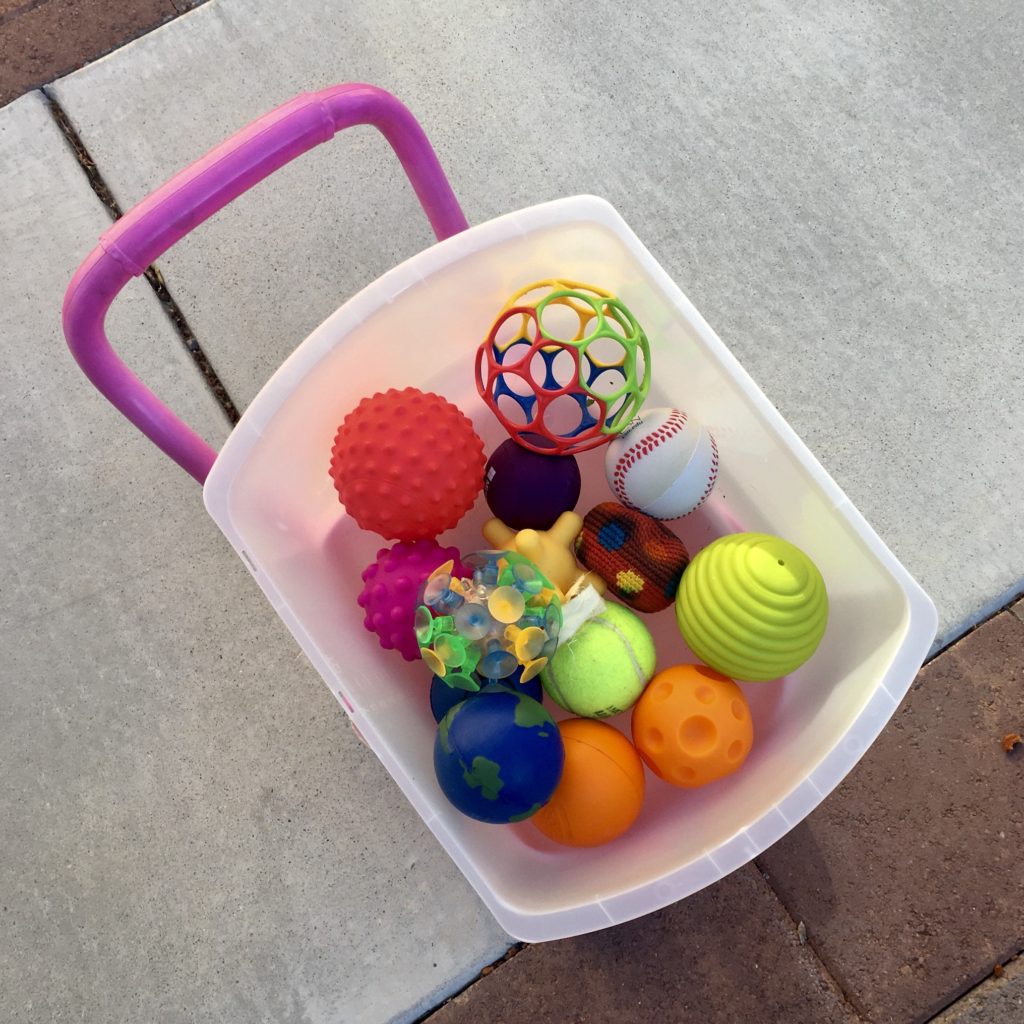Over the past few months, my daughter has really gotten into reading Peanuts. Charlie Brown’s escapades on the pitcher’s mound dovetailed nicely with the the Nerf ball and bat we gave her last Christmas and the fact we’ve been trapped at home during the pandemic.
We gathered all the soft balls in the house and started using it for batting practice in the backyard.
Starting from the bottom corner:

- Orange ball, foam. This is the Nerf ball that came with the bat. She has decided this is her favorite ball of them all.
- Blue and green globe, squishy. A stress-ball with a NV Health Link logo, so I believe it we must have picked it up during some sort of local fair in the last few years when the ACA was being rolled out.
- Blue ball, squishy. This ancient stress-ball has a smiley face on it. We have no idea where it came from.
- Tennis ball, fuzzy. My in-laws had a couple ancient tennis balls in their garage when we moved to Vegas seven years ago. This thing might be old enough to drink.
- Orange ball, dimpled. We bought our boy a set of rubber balls when he started teething a couple years ago.
- Lime ball, striated. This is part of that rubber ball set. It feels a little hard inside the house, but it softens up quite a bit when you go outside on a warm day.
- Hacky sack, red. We picked this up at Kappa Toys, while waiting to join the Women’s March in January, 2017. Last year, I met the owner of the store, when we were putting our house up for rent. She and her husband were very nice
- Yellow Ball, corona-y. Part of the rubber ball set. We thought he might like to chew on these toys, but no, he only enjoyed putting contraband into his mouth.
- Sucker Ball, fluorescent. I picked this up off the side of the road along with a weighted jump rope. It works, we’ve had a ridiculous amount of fun throwing it at our dresser, and our closet doors (which are mirrors)
- Magenta Ball, dimpled. I’m running out of things to say about this rubber ball set.
- Red ball, dimpled. There is a sixth ball in the rubber ball set, but we have no idea where it’s been lost. I think it was light blue.
- Purple ball, bouncy. We were given this up at a Microsoft Surface event where our daughter made a little video. It has has a cloth cover but has a bit of bounce to it with some dense rubbery filler.
- Stress ball, baseball-y. This ball has logos of the College of Southern Nevada and the 51’s (a local minor league team now named the Aviators).
- O-ball, holey. When our daughter was a toddler, I wanted something to play catch with her. There was an option with rattles, but we chose the simple version. The rainbow colors make for a cool photo when thrown in the air.
- Container, translucent white. This came home with our boy from the hospital. If I remember correctly, he got his first bath in this tub, which is almost inconceivable two years later.
- Shopping Cart, Minnie. This was another roadside pickup, in downtown Las Vegas. It was on the way to the house, as I was doing some last fixes before putting it up to rent.
- Pavers, CMU. My in-laws decided to pave over a significant portion of their backyard which had been covered with river rocks. I disagreed with the idea and still think it was a horrifically ugly mistake. However, it has dramatically increased the amount of playable surface area for the kids, and during this time of COIVD, it has become a walking track for my father-in-law since they are hesitant to even leave the property. It’s a good reminder to take one’s own advice too seriously.

